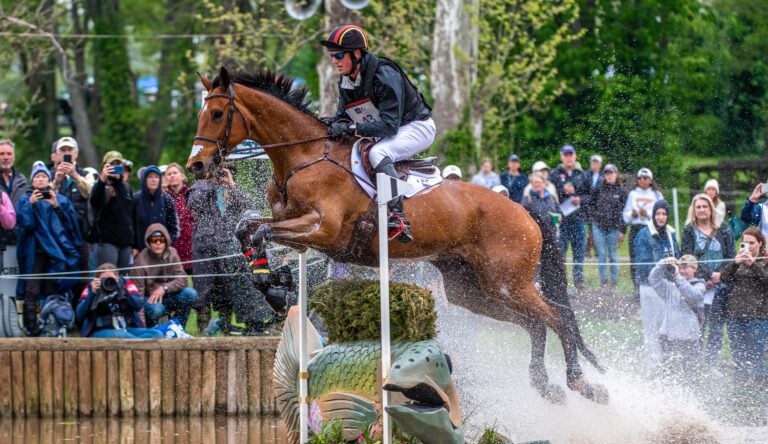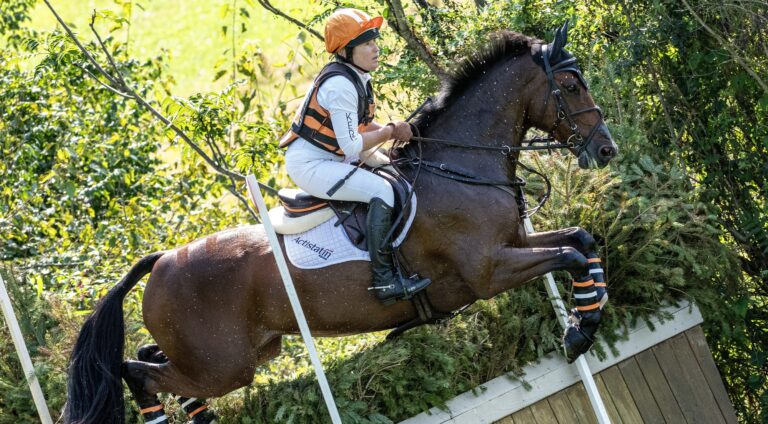With the 2018 World Equestrian Games quickly approaching, now is a great time to reflect on the incredible amount of training, dedication and passion that the athletes competing have invested to reach this level. We are all familiar with the outstanding feats of coordination between horse and rider that culminate in world-class performances in the ring, however, sometimes we don’t consider all of the ‘behind-the-scenes’ work that makes this possible. As a fan of show jumping, as well as someone working in the industry, I have always been fascinated by the steps needed to reach the top. I have performed a number of analyses quantifying currents trends in competition and training theory, and have been lucky to discuss my thoughts with some of the top horse people in the world.
In this series, I will provide an overview of some often-forgotten yet important considerations for producing a winning round at a major show-jumping championship. I will discuss recent exciting scientific findings around these concepts, and I will share my two cents on where I think the future of the sport may be heading and the potential role of technology in this evolution.
The majority of horses competing at WEG in Tryon will have changed owners at least once through their lives. The purchase will have been made with a number of considerations, such as: competition performance, health status, video analysis, trials under saddle, and expert opinion. These methods of evaluation have been around for decades now, and although the process has become more refined, the amount of available information has remained constant.
Contrast this process with player selection for professional sports teams in North America where teams are informed by a massive amount of data points. Since the early 2000s, numerous measures have been developed and refined for these sports to provide information regarding the potential of an athlete to make a valuable contribution to their team.
I was listening to an online discussion a few weeks ago describing the NBA draft, and the Director of Player Personnel of Boston Celtics Austin Ainge had a very elegant analogy describing the process of choosing a player to add to his team:
“It’s like a documentary movie. You’re acquiring a lot of little slides and you’re trying to get the full video. But you’re never going to get the full picture“.
If we think of every data point as a piece of the documentary, then the more data we get the more complete the athlete picture becomes.
Similar to a pro sports team looking to add players to the roster, selecting horses for your stable is a very complex process. The truth is that in the world of show jumping, the majority of horses purchased to be a rider’s next top horse do not fully pan out. A likely reason that horses do not always meet or exceed expectations in the show ring is that they are purchased with limited information, or with a number of “holes” in the documentary. If riders knew the “full story” about a horse before the purchase, they would likely go through a different decision-making process. Conversely, horses that other riders passed on (for example Eric Lamaze’s famous stallion Hicksted) may become more valuable if more data on their potential becomes available.
The Future
Although equestrian sports have lagged behind human-centric sports when it comes to incorporating technology and data into everyday training and management, our world is quickly catching up. The development and incorporation of this technology, and all of the new information that comes with it, will have a huge impact on how horses are purchased moving forward. This new technology will supply new data points to help create a more complete picture of the horse.

For example, one of the key barriers to many horses reaching the top of the sport is the health of the musculoskeletal system. Injuries to tendons, ligaments, bone and the joint capsules of the legs can all be key determinants in limiting a horse’s ability to jump 1.60 m fences multiple weeks in a year. It is known that chronic stress is a major risk factor contributing to these injuries. Chronic stress induces a number of hormonal changes in the body, which ultimately reduce the body’s ability to repair itself after exercise. Over time, the body becomes weaker until a sprain, tear or break occurs. It is incredibly important that a horse purchased with the goal of reaching the top of the sport is not in a state of chronic stress. However, the stress response of horses is not currently measured during the pre-purchase process.
Interestingly, technology may be able to provide insights into the stress levels of horses. For example, extensive work has been done characterizing the heart-rate response of horses to different types of exercise. A horse that responds atypically to work may be displaying signs of chronic stress that would not be otherwise detectable. An example of this would be a horse that maintains an elevated heart rate even during periods of rest during a workout (where healthy horses would decrease heart rate at this time).
In the video above, you can see how easily information about a horse’s (and rider’s) heart rate can be assessed. The Hylofit heart rate monitor can provide riders with real-time data regarding how the horse is responding to exercise. A horse that responds atypically to exercise may be displaying early signs of overtraining or chronic stress. Conversely, you may try a horse that performs a lot of work at a low heart rate, which may indicate this horse finds the work easy and has the potential to increase the level of work.
Another potential application of technology may be assessing the ‘resting’ activity of the horse. Although often not considered during the buying process, it is well known that periods of rest and relaxation are needed to help the body repair and recharge between bouts of exercise. A horse that doesn’t relax in its’ stall or in the paddock may be predisposed to developing injury over time. Activity monitors that can be worn 24/7 to track movement represent an interesting avenue, as constant movement throughout the night indicates the horse is not resting at this time.
Using technology already readily available, it is possible to greatly increase the amount of information about a horse you may be looking to buy. Although careful interpretation of the data is needed, it may provide important clues as you hunt for your next superstar.
I will finish this idea by acknowledging that the concept of using technology to help select horses will likely receive fierce opposition from some in the sport. The idea of divulging more information than the norm about a horse you are attempting to sell is not an appealing thought for many horse dealers. Thus, a potential buyer’s request to put a heart rate or activity monitor on a horse may be rejected. However, a buyer confident in their horse’s health and training would welcome the idea, and the data provided by the sensors would solidify the seller’s comments about the horse and improve buyer confidence.
Dr. Tim Worden is a consultant for Hylofit and specializes in the translation of human high-performance training theory and techniques to equestrian athletes. With expertise in both equestrian sport and sports science, he is uniquely positioned to move training techniques from ‘human to horse’; improving the performance of horses and reducing injury risk. Tim completed his MSc (Biomechanics and Neuroscience) and PhD (Biomechanics) at the University of Guelph, Canada. He has published a number of peer-reviewed articles on human navigation through complex environments and the control of stability during locomotion. During his time as a doctoral student, Tim concurrently worked as an equestrian sport scientist, with a clientele composed predominantly of FEI-level show jumping riders. Follow him on Instagram – @twordentraining.
Click here for complete show jumping coverage, event highlights, and a behind-the-scenes experience during #Tryon2018. Show Jumping coverage of the FEI World Equestrian Games™ Tryon 2018 is brought to you by Hylofit.










